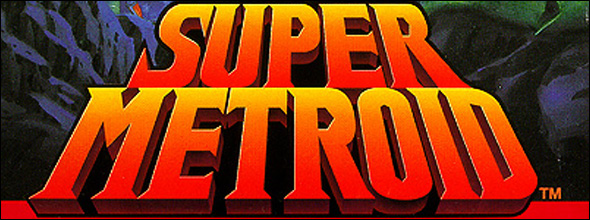Super Metroid – Establishing the Doctrine
August 19th, 2010
The original Metroid may not be as sharp as Super Metroid, but it does have one trump over its SNES successor, being its initial assertion of exploration-driven gameplay. A year prior to Metroid‘s release, Super Mario Bros. had taught players that walking to the right-hand side of the screen would advance the game. Metroid, in a master stroke of studio-wide realization and subversion, did the exact opposite: it told players to go left. If the player walked left, instead of the assumed right, at the game’s onset, they would stumble upon Metroid‘s first power-up, the morph-ball, thereby allowing the player to bypass a stumbling block a few screens to the right. As with Super Mario Bros. and that first goomba, the player cannot progress until they have understood the fundamental principles of the game. In one fell swoop, Metroid succinctly communicated its doctrine of subversive exploration.
Super Metroid‘s takes a much less momentous approach but wisely integrates the morph-ball bomb technique, which becomes a crutch for exploration throughout the entire game. Early on in Super Metroid, after the player becomes acquainted with the basic controls, they’re lead through a cavern to a seemingly dead end. They’re as stuck and confused as anyone who’d just been lead down the wrong path would be. After some fumbling about, the player will likely go back to the wall, look around until they notice that at the bottom of the wall is a block with an unsuspecting texture which mildly stands out from the fungus growing around it. A short morph-ball bomb later and—voila!—the block evaporates and the game continues.
Right there, by raising the bar high in this initial instance, Super Metroid doesn’t just set a precedence for exploration but also demands the player learn the tools (morph-ball bomb) and adopt the observation techniques (out of place textures) required to explore properly. As put by co-creator Yoshio Sakamoto in an interview with RetroGamer magazine:
We wanted players to explore everything we’d made and then move on. That’s why we designed the maps in such a way that the player couldn’t escape without exploration, or in such a way that the player would end up back at a starting point before advancing. The player would be cornered/driven and would eventually be forced to stop and say, “Right, how should I think about this area?” That’s the essential point of Metroid’s map design.
Since such a significant chunk of exploration—namely in the first half of the game, but nonetheless throughout—is based around the morph-ball bomb technique, it can be argued that Super Metroid is simply more specific with what it teaches. This makes sense as Super Metroid scaffolds tutorials around the player continuously throughout the experience in the most minute and unnoticeable ways. The original Metroid, on the other hand, sets the player up briefly and then lets them loose on a massive environment with minimal help or suggestion.




 Game Design Companion: A Critical Analysis of Wario Land 4 - $7.99
Game Design Companion: A Critical Analysis of Wario Land 4 - $7.99 Level Design: Processes and Experiences
Level Design: Processes and Experiences Speed Boost: The Hidden Secrets Behind Arcade Racing Design - $5.99
Speed Boost: The Hidden Secrets Behind Arcade Racing Design - $5.99 Adventures in Games Analysis: Volume I - $5.99
Adventures in Games Analysis: Volume I - $5.99







